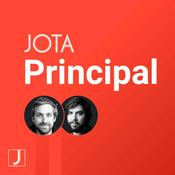53 episódios

Resistance is (not) Futile!
26/9/2024 | 34min
Resistance is (not) Futile! Strapping Jet Engines to an 1880s Paddle Steamer Guests: Dimitri Ponkratov (Marine Director, Siemens Digital Industries Software), Rui Lopes (Postdoc, Chalmers University) Host: Stephen Ferguson Episode Summary: In this episode of The Engineer Innovation Podcast, we explore one of the most surprising engineering experiments of the 20th century—strapping jet engines to an 1880s paddle steamer to solve the problem of ship resistance testing! Our guests, Dimitri Ponkratov and Rui Lopes, walk us through the rediscovery of this post-war experiment and explain how it’s influencing cutting-edge ship design today. Dimitri shares the fascinating history of the Lucy Ashton, a paddle steamer refitted with jet engines in the 1950s to isolate ship resistance from propeller effects. Meanwhile, Rui discusses the ongoing international workshop using modern computational fluid dynamics (CFD) simulations to validate this historic data, and how their findings could revolutionize the future of shipbuilding. Key Topics Discussed: Full-scale ship resistance testing: challenges and breakthroughs The 1950s experiment involving jet engines on the Lucy Ashton How historical data is shaping modern CFD models and simulations Insights from the JoRes Joint Research Initiative and Chalmers University workshop The implications of this research for future ship design and performance testing Show Highlights: [03:25] Dimitri introduces the concept of ship resistance and explains the challenges of isolating different components in real-world tests. [09:00] The story behind the Lucy Ashton and the ingenious 1950s experiment that used jet engines to solve a naval engineering puzzle. [14:45] Ruy shares the success of their international workshop, where 47 groups are participating to validate this unique data set using modern CFD tools. [25:20] A look at the impact of human error in ship simulations and how workshops like this help refine industry practices. [30:00] Reflections on the historical significance of the Lucy Ashton and its continued role in maritime innovation. Resources Mentioned: Lucy Ashton on Wikipedia Chalmers University Workshop on Ship Resistance Testing JoRes Joint Research Initiative

Trisolaris: From CERN to 3 body problem with Matt Kenzie
18/9/2024 | 1h 7min
In this episode, Dr. Matt Kenzie, an Associate Professor at Cambridge University, dives into the intricate world of experimental particle physics. He shares his journey into the field, highlighting the pivotal moments and discoveries that shaped his career. The discussion also explores the current challenges facing the Standard Model, the technological advancements driving the field forward and what the future holds for particle detection and the development of next-generation collider technologies. Key Takeaways: The journey into particle physics often involves unexpected paths and key discoveries that shape a researcher’s career. Addressing the limitations of the Standard Model is crucial for uncovering new physics and advancing our understanding of the universe. Technological advancements and collaboration are driving the future of particle detection, paving the way for more powerful and precise collider experiments. This episode of the Engineer Innovation podcast is brought to you by Siemens Digital Industries Software — bringing electronics, engineering and manufacturing together to build a better digital future. If you enjoyed this episode, please leave a 5-star review to help get the word out about the show, and subscribe on Apple or Spotify so you never miss an episode. For more unique insights on all kinds of cutting-edge topics, tune in to siemens.com/simcenter-podcast. Relevant links: Dr. Matt Kenzie https://www.phy.cam.ac.uk/staff/dr-matt-kenzie ▶️ About Simcenter: Engineering departments today must develop smart products that integrate mechanical functions with electronics and controls. They should utilize new materials and manufacturing methods and deliver new designs within ever shorter design cycles. This requires current engineering practices for product performance verification to evolve into a Digital Twin approach, which enables us to follow a more predictive process for systems-driven product development. Simcenter™ software uniquely combines system simulation, 3D CAE and tests, to help predict performance across all critical attributes, early and throughout the entire product lifecycle. By combining physics-based simulations with insights gained from data analytics, Simcenter helps you optimize design, and deliver innovations faster and with greater confidence. #ParticlePhysics #PhysicsResearch #ScienceInnovation #StandardModel #ColliderTechnology #ExperimentalPhysics #NewPhysics #ScientificCollaboration #CERN #FutureOfScience

Digital Threads in Semiconductor Engineering
04/9/2024 | 48min
In this episode of the Engineer Innovation Podcast, host Stephen Ferguson is joined by two experts from Siemens—David Corey, VP of Semiconductor Industry Sales, and Dr. Andras Vass-Varnai, Business Development Leader—to explore the latest trends and challenges in semiconductor technology. Our conversation covers the economic limits of Moore’s Law, the increasing complexity of semiconductor packages, and the critical role of digital threads in streamlining design and manufacturing processes. David and Andres break down how digital threads connect data across all stages of product development, helping companies manage the growing complexity of semiconductor design and production. The episode also delves into how simulation and automation are revolutionizing the industry, and the hard lessons learned from COVID’s impact on global supply chains. Whether you’re curious about the future of your smartphone’s chips or deeply involved in the semiconductor industry, this episode offers valuable insights into the innovations that are driving the future of electronics. Key Topics Discussed: Moore’s Law and its economic limits in the semiconductor industry The rise of advanced semiconductor packaging and heterogeneous integration What digital threads are and how they connect every stage of semiconductor development The importance of data management and simulation in reducing time-to-market Lessons from COVID: How global supply chains adapted and what’s changing moving forward Real-world applications of digital threads in semiconductor manufacturing Notable Quotes: "Digital threads are not just buzzwords; they're the backbone of how companies are managing complexity and driving innovation." "The semiconductor industry might be hitting the limits of Moore’s Law economically, but innovation is just getting started." Resources & Links: Learn more about Siemens' work in the semiconductor industry: Siemens Digital Industries Follow David on LinkedIn: https://www.linkedin.com/in/david-corey-siemens/ Follow Andras on LinkedIn: https://www.linkedin.com/in/andras-vass-varnai/ More about digital threads in manufacturing: https://blogs.sw.siemens.com/simcenter/digitalizing-the-semiconductor-industry/ Episode Highlights: [02:30] David Corey discusses the economic realities facing the semiconductor industry and the shifting focus on packaging. [10:45] Dr. Andres Vasvane explains how digital threads streamline product development and the impact of simulation. [18:00] The importance of a flexible supply chain and how companies are using digital threads to move data more efficiently. Tune In: Subscribe to Engineer Innovation Podcast on Spotify, Apple Podcasts, or wherever you download your podcasts to stay up-to-date with the latest in engineering and technology.

Apollo 13: The Birth of the Digital Twin
21/8/2024 | 21min
On April 13, 1970, 210,000 miles away from Earth (about 330,000 km), three astronauts were suddenly jolted by a "bang-whump-shudder" that shook their tiny spacecraft. One of the astronauts saw the hull physically flex. Within seconds, the cabin was illuminated with warning lights, and a cacophony of alarms rang in their ears. “Houston, we’ve had a problem,” reported Apollo 13 Commander Jim Lovell. Something was wrong—seriously wrong. But, unable to see outside of the craft, the astronauts couldn’t grasp the full extent of the damage. With every passing minute, the crippled spacecraft moved another 400 miles away from Earth. In the history of our species, no one had been in this much trouble so far from home. Indeed, a few hours later, they would be farther from home than anyone had ever been, either before or in the 50 years since. In this special documentary edition of the Engineer Innovation podcast, we explore the role that engineering simulation played in rescuing three American astronauts from near-certain death, turning what could have been NASA’s biggest disaster into its greatest success. Key Takeaways: The Apollo 13 mission is more than just a story of survival; it’s a pivotal moment in the history of digital engineering, marking the birth of the digital twin. Discover how NASA engineers used simulations and real-time data to create a virtual replica of the damaged spacecraft, allowing them to test solutions and guide the crew home. Explore the lasting impact of this innovation, which has since evolved into a critical tool across industries, from aerospace to manufacturing. This episode of the Engineer Innovation podcast is brought to you by Siemens Digital Industries Software—where electronics, engineering, and manufacturing come together to shape a better digital future. If you enjoyed this episode, a 5-star review would be much appreciated. And don’t forget to subscribe on Apple or Spotify to stay updated on future episodes.

The shockingly vast and complex world of electric arc dynamics with Dr. Roman Fuchs of OST
25/7/2024 | 32min
In this episode, we’re joined by Dr. Roman Fuchs, a Lecturer at OST. Dr. Fuchs talks about electric arc simulations, their role in electrical engineering and their impact on safety and efficiency in power systems and electric vehicles. Learn about the latest advancements in simulation technology and how they are driving innovation. Key Takeaways: - Electric arc simulations help create safer and more reliable electrical systems. - Understanding high- and low-voltage circuit breakers is key to designing efficient systems. - Reducing the environmental impact of SF6 gas in high-voltage circuit breakers is important for sustainable engineering. Resources Mentioned: Dr. Roman Fuchs - https://www.linkedin.com/in/roman-fuchs-comp-sci/ OST - https://www.linkedin.com/school/ost-ostschweizer-fachhochschule/ This episode of the Engineer Innovation podcast is brought to you by Siemens Digital Industries Software — bringing electronics, engineering and manufacturing together to build a better digital future. If you enjoyed this episode, please leave a 5-star review to help get the word out about the show, and subscribe on Apple or Spotify so you never miss an episode. For more unique insights on all kinds of cutting-edge topics, tune in to siemens.com/simcenter-podcast ▶️ About Simcenter: Engineering departments today must develop smart products that integrate mechanical functions with electronics and controls. They should utilize new materials and manufacturing methods and deliver new designs within ever shorter design cycles. This requires current engineering practices for product performance verification to evolve into a Digital Twin approach, which enables us to follow a more predictive process for systems-driven product development. Simcenter™ software uniquely combines system simulation, 3D CAE and tests, to help predict performance across all critical attributes, early and throughout the entire product lifecycle. By combining physics-based simulations with insights gained from data analytics, Simcenter helps you optimize design, and deliver innovations faster and with greater confidence. #Energy #RenewableEnergy #Solarenergy #PowerGeneration #EnergyEfficiency #CleanEnergy #WindEnergy #EnergyManagement #GreenEnergy #NaturalResources
Mais podcasts de Notícias
Podcasts em tendência em Notícias
Sobre Engineer Innovation: Conversations about Industry 4.0, Engineering AI/ML, Digital Twin, & Computer Aided Engineering.
Ouça Engineer Innovation: Conversations about Industry 4.0, Engineering AI/ML, Digital Twin, & Computer Aided Engineering., The Daily e muitos outros podcasts de todo o mundo com o aplicativo o radio.net

Obtenha o aplicativo gratuito radio.net
- Guardar rádios e podcasts favoritos
- Transmissão via Wi-Fi ou Bluetooth
- Carplay & Android Audo compatìvel
- E ainda mais funções
Obtenha o aplicativo gratuito radio.net
- Guardar rádios e podcasts favoritos
- Transmissão via Wi-Fi ou Bluetooth
- Carplay & Android Audo compatìvel
- E ainda mais funções


Engineer Innovation: Conversations about Industry 4.0, Engineering AI/ML, Digital Twin, & Computer Aided Engineering.
baixe o aplicativo,
ouça.







































